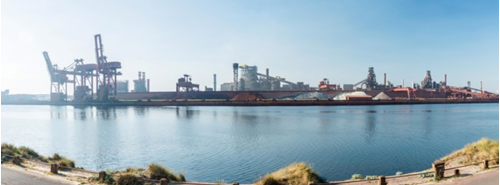News
Air Liquide, ArcelorMittal to decarbonize Dunkirk steel industry

Air Liquide and ArcelorMittal have signed an MOU that aims to contribute significantly to the decarbonization of the Dunkirk industrial basin. In the context of the Paris Agreement, the European Commission’s Green Deal, and in line with Air Liquide and ArcelorMittal’s commitments to energy transition, the project will reduce yearly CO2 emissions from ArcelorMittal’s steel-making facilities in Dunkirk by 2.85 MMt by 2030. Air Liquide and ArcelorMittal have jointly applied for large projects funding under the Important Project of Common European Interest (IPCEI) scheme for hydrogen. Funding from European and/or French schemes supporting decarbonization is key for the implementation of the project.
ArcelorMittal is ready to implement an innovative production unit on its Dunkirk site, combining two steel production technologies – DRI: direct reduced iron unit, and submerged arc furnace – in dimensions never seen before. As a low-carbon technology, the DRI and submerged arc furnace unit will enable the production of steel with lower CO2 emissions. This initiative was the subject of a preliminary study announced by ArcelorMittal last October. It comes in addition to the initiatives already implemented by ArcelorMittal on its Dunkirk site to lower its CO2 emissions.
Air Liquide will support this strategic initiative through the massive supply of low-carbon hydrogen and the implementation of CO2 capture technologies in Dunkirk, one of Air Liquide's historical industrial basins in France. The Air Liquide group has developed a unique expertise both for hydrogen all along the value chain, from production and storage to distribution, as well as CO2 capture technologies. Leveraging this know-how and in line with its Climate objectives, Air Liquide is committed to develop sustainable solutions in supporting its customers in the steel industry to reduce carbon emissions.
This partnership between Air Liquide and ArcelorMittal is a first step towards the creation of an ecosystem at the forefront of low-carbon hydrogen and CO2 capture solutions that will be a source of competitiveness and attractiveness for various players in the Dunkirk industrial and port basin.

